Fernwayer’s Lisbon Tours
Private tours in Lisbon led by local experts on foot or aboard a tuk-tuk. Embrace the city’s heritage from tiles to fado, explore its art scene in gallery tours, studio visits, and photography walks, or sample its culinary heritage.
Lisbon is one of Europe’s most popular cities, where the sun shines nearly every day. Beyond the postcard views taken from its countless miradouros and the azulejo facades splashed between churches and underground stations, lies a resilient city that is continuously reinventing itself. Welcoming millions of visitors every year, it sometimes feels like the city has lost its soul. Fernwayer’s Lisbon experiences help revive it, providing a balance between memory and modern life, connecting you with people who are keeping traditions alive and others who are shaping Lisbon’s future.
Our approach relies on deep local knowledge and authenticity. We introduce you to the city’s historic heritage but also its newest features. You’ll meet art curators responsible for spurring the city’s emerging contemporary art scene – inviting you inside galleries or taking you behind the scenes of creative studios. In one of them, you’ll support a local association working to bring fresh energy to the city’s aging community.
An art historian takes you across the city’s iconic architectural landmarks, offering a glimpse of the past and a sense of nostalgia that is perfectly captured in an intimate fado performance. An acclaimed sommelier reveals the essence of Portuguese wine and its tasting rituals. A professional photographer guides you through the maze of Alfama’s streets and industrial Alcântara in search of the city’s iconic light. And if you venture further afield, you’ll meet nature and cultural experts ready to show you prehistoric trails and village life.
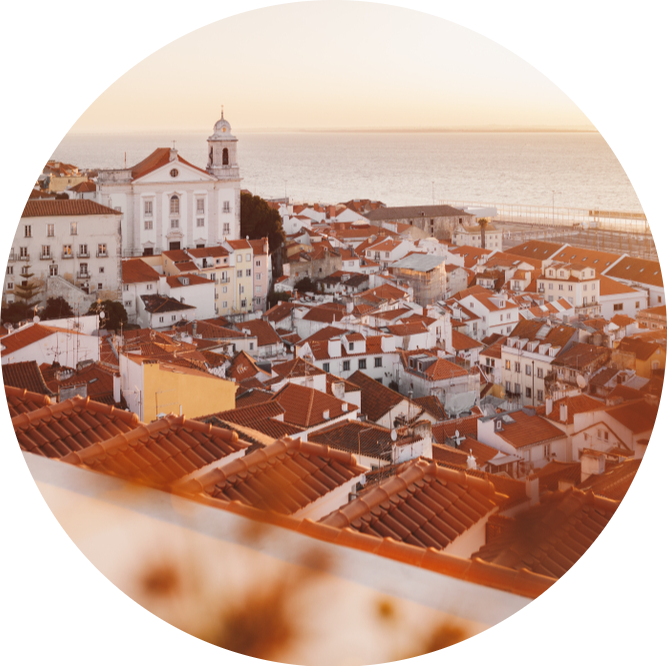
FERNWAYER'S LISBON ESSENTIALS
We’ve handpicked a collection of experiences that capture the authentic soul of Lisbon. These are the best tours you’ll find of Portugal’s capital. Each one invites you to see Lisbon through a different lens, guided by the people who call it home.
Our tours uncover Lisbon’s hidden corners: azulejo-covered buildings, impromptu viewpoints, intimate concert spaces, and neighborhoods where creativity spills into the streets. You’ll find yourself in a Neo-Moorish palace that once worked as a casino, in a sommelier’s home, savoring her handpicked selection of Portuguese wines, or wandering through Alfama, the city’s oldest district, to witness a live fado performance or capture its medieval core with a professional local photographer. And if you feel like venturing further, you can always take a day trip along the coast or inland in search of monasteries or a Roman temple.
Explore our essential Lisbon tours below or see all Lisbon experiences here.
MAKE THE MOST OF YOUR TIME
Fernwayer’s Lisbon Journeys — suggested itineraries, designed by us, booked by you — are anchored in our curated experiences.
Just one day in Lisbon? For first-time visitors, Where Time Has Paused offers a perfect introduction to the city, taking you across historic neighborhoods on a guided walk exploring architecture, gastronomy, and culture. With 5 days in Lisbon, The Charming Soul of Lisbon combines guided tours with self-led exploration, highlighting the city’s past and modern sites — wander past old cafés and elegant squares, join a wine tasting, and wander into the city’s art galleries. If combining Lisbon with the surrounding regions: Lisbon and the Roads Out takes you across the coast and deep into the countryside on a seven-day itinerary. You’ll visit UNESCO sites, witness the surf scene, and sample delicious regional cuisine.

The Human Edit
Need help planning your trip? A Fernwayer curator takes your preferences and designs a custom travel itinerary that works. This is human-led travel planning — by someone who understands the art of travel itinerary design — built around your dates and preferences. Each personalized itinerary uses Fernwayer experiences as anchors and complements them with recommendations for flights, hotels, restaurants, and self-explore ideas.
FOLLOW YOUR PASSIONS
If you’re looking for a historical context of Lisbon, join our architecture and heritage tours, following an art historian as they reveal the city’s transformation through time, stepping into century-old cafés, tile workshops, and hidden churches. If you feel moved by the sound of fado, take a guided evening walk through Alfama, the birthplace of this soulful music genre. Or capture its narrow alleys in daylight on a photography tour with a seasoned photographer. If you’re drawn by the city’s arts and crafts scene, connect with artists and curators on a gallery and studio walk across Lisbon’s creative hubs. And if food and wine are what you’re dreaming of, join an intimate tasting with an award-winning sommelier, learning to distinguish Portugal’s wine regions so you can shop for your favorite bottle later on. Each experience reveals a different side of Lisbon, led by the people who live here and curated for travelers looking for a deeper connection with the city and Portuguese culture.
Architecture and Heritage Tours
Witness Lisbon’s architectural evolution from its Moorish influences, which introduced the iconic azulejos, to its Art Nouveau-style cafés and industrial districts. Our Heritage and Architecture Tours help you peel back the layers of what is one of Europe’s oldest cities. You'll pause to reflect on the devastating impact of a historic earthquake in a church that withstood the tragedy, following the resilience of neighborhoods rebuilt after that, and connecting you to the city’s creative revival on the east side where industrial powerhouses have been turned into dynamic cultural hubs, signaling Lisbon’s endless reinvention.
Fado Experiences
Embrace the feeling of saudade in an intimate fado concert. You’ll hear this nostalgic Portuguese music genre echoing through the streets of Alfama, Lisbon’s oldest district. A knowledgeable tour guide will lead you through its narrow lanes on foot, uncovering its medieval roots as the sun goes down, closing the evening in a dimly lit fado house. Meanwhile, an art historian takes you on a soulful journey through the city’s architectural wonders and cultural symbols, transporting you back in time. Then wind up the hill on a tram for an immersive dining experience accompanied by the melancholic strains of fado.
Photography Tours
Our Photography Tours show you how to make the most of Lisbon's light, helping you find your own angle, even without prior skills. You’ll explore popular districts like Alfama with a fresh eye, moving away from the crowds alongside a seasoned photographer who has walked its narrow alleys for years. With guidance on framing and composition, you’ll learn how to work with shifting exposure, read shadow lines, and compose amid a sea of tiled façades, iron balconies, and tram lines. In another tour, you’ll chase the sunset on a photo walk, capturing vibrant street art murals before wrapping up with a photoshoot under the 25th of April Bridge.
Arts and Crafts Tours
Fernwayer’s arts and crafts tours reveal the city’s creative spaces and help support its community. You’ll meet the people behind an inspiring project empowering Lisbon’s "grandmothers" to express their creativity and entrepreneurial spirit, listen to their life stories, and engage in hands-on craft workshops. Learn to sketch secret viewpoints with a professional illustrator, step inside artist ateliers, and visit contemporary art galleries with cultural experts deeply in touch with the city’s emerging art scene.
Food and Drink Tours
Indulge in the rich flavors of Portuguese cuisine by joining one of our Lisbon food and drink tours. Trace back 250 years of history while sampling traditional treats on a food walking tour, join a cooking class, or immerse yourself in the world of Portuguese wine with our private wine tastings led by an award-winning sommelier. From sensorial masterclasses to casual, conversation-driven tastings, each experience offers a memorable and educational journey through Portugal’s proud winemaking traditions — all without leaving the capital. And if it’s seafood you crave, our journey through Setúbal will take you inside one of the country’s beloved fish markets.
Day Trips from Lisbon: Évora, Setúbal, Ericeira, and beyond
Discover the diverse landscapes and rich history of Portugal with a day trip from Lisbon. Venture on walking or driving "safari" experiences through the scenic routes of Sesimbra and Setúbal, where nature and adventure meet. Explore UNESCO World Heritage sites around Évora, Tomar and Alcobaça. Travel up the coast of Ericeira or venture further inland to visit a schist village where community traditions still prevail.
NEIGHBORHOOD GUIDE
Lisbon is a city of hills, with neighborhoods perched between the top and bottom. To avoid the hassle of going up and down, you’re best off sticking to central areas like Baixa and Chiado. From here, you can easily walk to the city’s main landmarks, hop on a tram, or take the metro and train to further towns like Sintra.
Where to stay? The area around downtown can be busy, but it is also where you’ll find most of the city’s hotels. Baixa: Best for first-time visitors who want to stay close to the city’s main landmarks. Four and five-star hotels line the Avenida da Liberdade and the streets around Terreiro do Paço. Chiado: A handful of five-star hotels can be found in the streets around Chiado, a lively district famous for shopping and fine dining. Príncipe Real: Charming gardens, design concept shops, and some boutique hotels make up this trendy district, also popular for its nightlife scene. Alfama: Lisbon’s oldest neighborhood can often be packed with tourists, but hotels here have an historic feel, with some occupying former palaces and offering sweeping river views. For more neighborhood highlights, flip the cards below.
Lisbon Neighborhood Guide
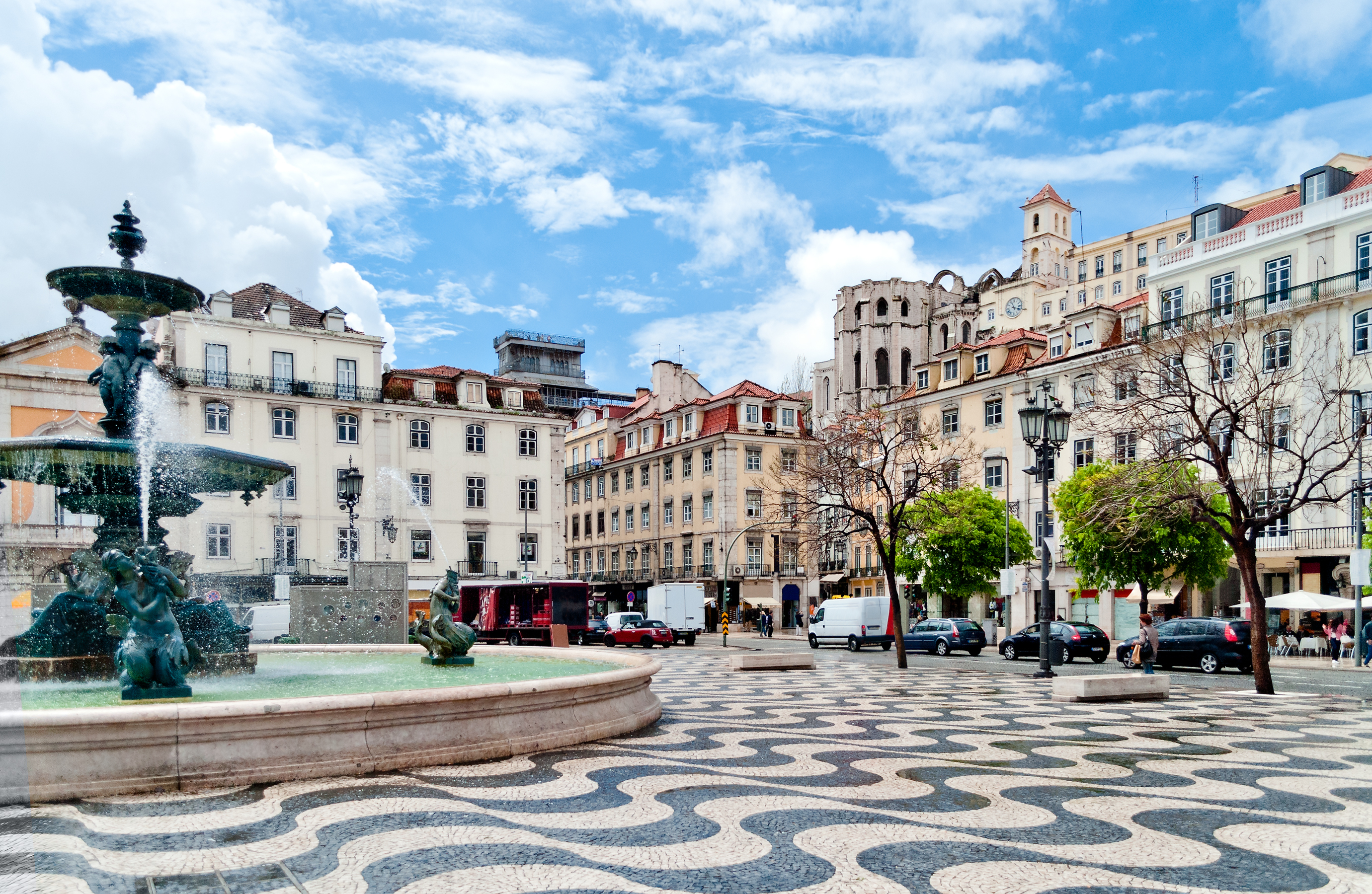
Baixa
Baixa is Lisbon’s downtown area, where grand squares meet shopping streets like Rua Augusta and Avenida da Liberdade. The neighborhood was completely rebuilt after the 1755 earthquake, which explains the collection of neoclassical facades and wide promenades. It’s ideal for first-time visitors who want to be in a flatter area near main landmarks like Terreiro do Paço, a square overlooking the Tejo river that has been the stage of many of the city’s historic events. Recommended Experience: Saudade: Lisbon’s Soul.
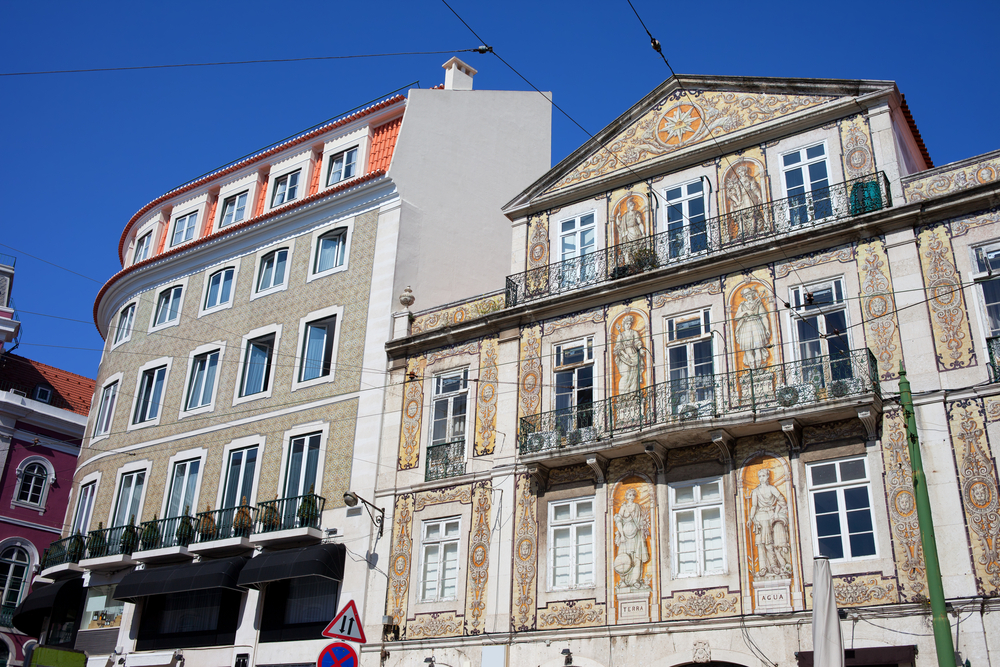
Chiado
Bookshops, cafés, and theatres dot this equally central district. It was around here that poets like Fernando Pessoa once gathered in the 19th century, and statues of him and other writers can be spotted all over. It’s also a beloved dining hotspot, home to Michelin-star restaurants like Belcanto. Other top attractions include the remains of a Gothic convent and a historic elevator. Perfect for strolling, shopping, and café lingering. Recommended Experience: Where Time Has Paused.
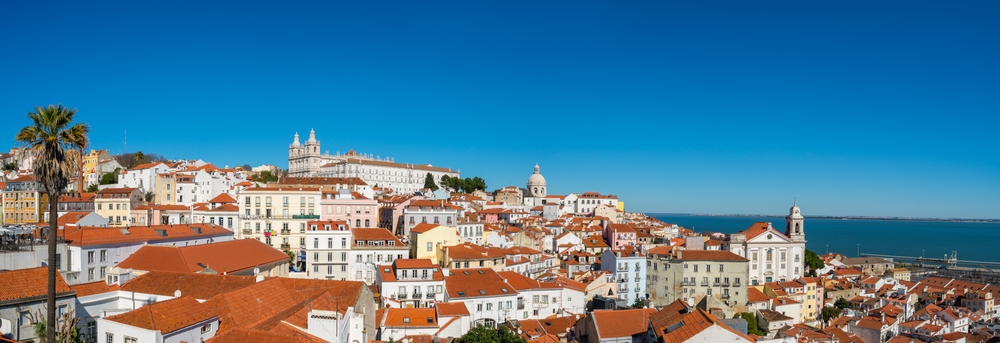
Alfama
Alfama is Lisbon’s oldest district, known for its medieval charm and fado heritage. Vintage trams whisk through it, passing by iconic landmarks like the cathedral and viewpoints looking over a sea of terracotta roofs. Come here to experience what the city looked like pre-earthquake, with steep cobbled lanes and hidden courtyards, listen to fado in traditional taverns, pose against tile facades, and take in the views. Recommended Experience: Through Alfama's Light.
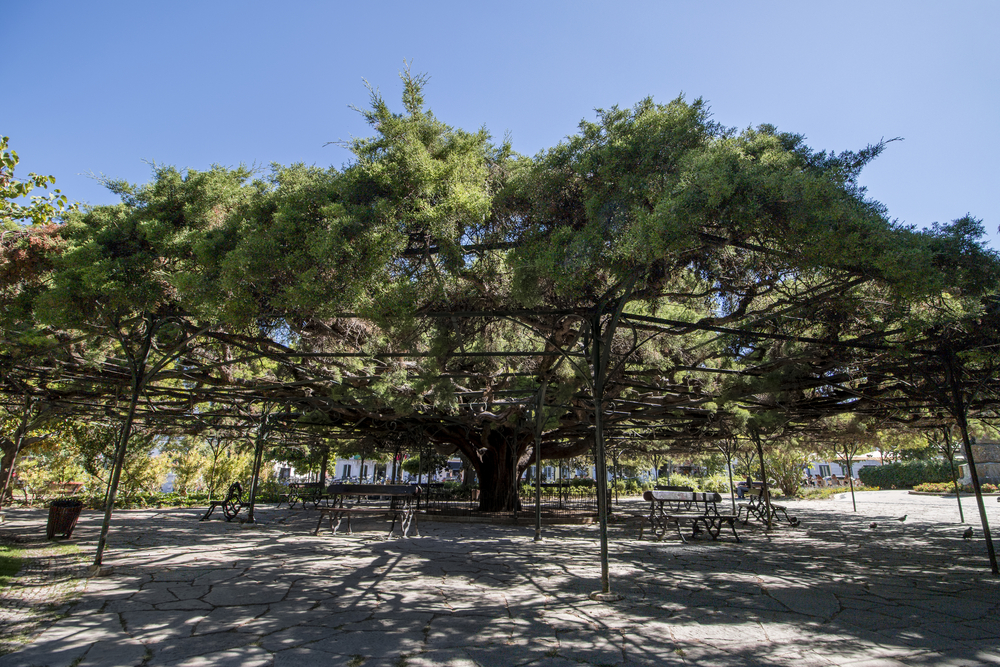
Príncipe Real
If you love fashion, you’ll enjoy perusing Príncipe Real, a trendy district filled with boutique shops, including a gallery housed in a Neo-Moorish palace. An organic market is held in the neighborhood park every Saturday, where many residents source their fresh produce. The botanical gardens offer a quiet haven from the city’s hustle and bustle, but as the sun sets, cocktail bars and elegant restaurants start to fill up. Recommended Experience: Where Time Has Paused.
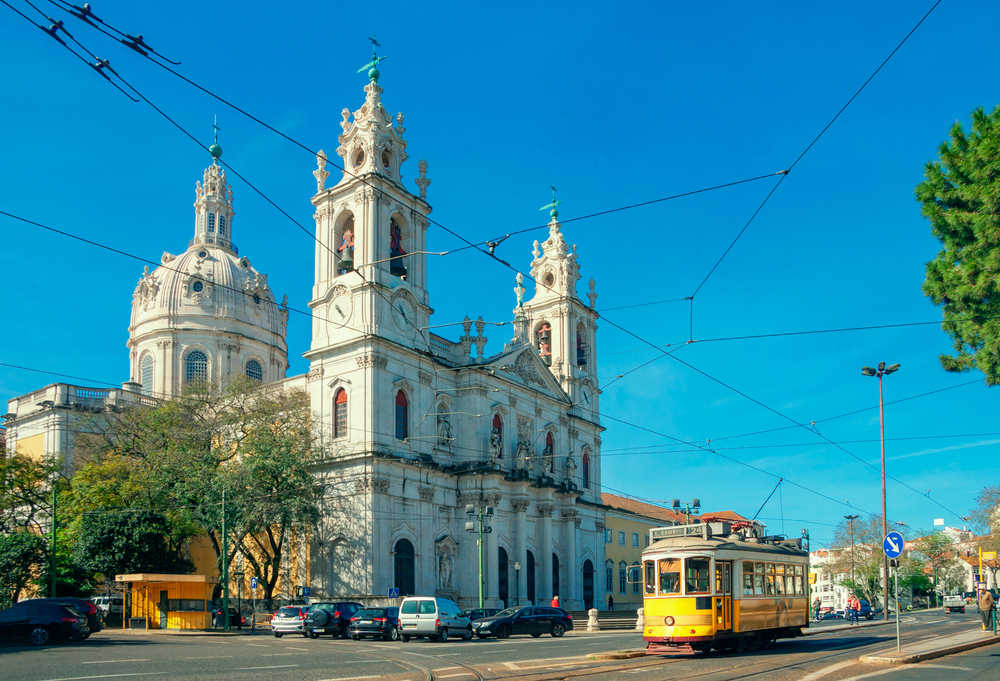
Estrela
Families love to wander around Estrela, home to one of the city’s most charming gardens. The only major landmark here is the 18th-century Basílica da Estrela, but there is also a trail of contemporary art galleries and antique shops. The neighborhood is pretty quiet for the best part, save for the trams whisking by to nearby Campo de Ourique, home to a lively food market and a cemetery that doubles as a viewpoint. If you want a glimpse of city life while staying relatively near the center, you’ll enjoy this area. Recommended Experience: A Trail of Art Galleries.
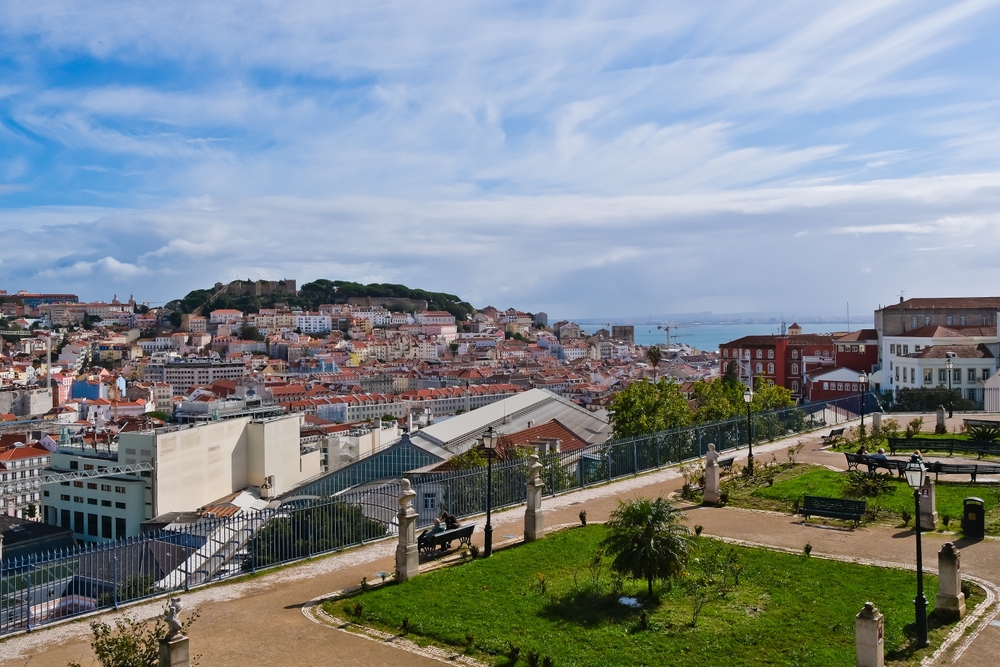
Bairro Alto
Bairro Alto is the center of Lisbon’s nightlife scene. By day, you can explore its quiet lanes lined with tile-covered buildings and hidden churches, but as the sun sets over the Miradouro de Santa Catarina or Miradouro de São Pedro de Alcântara, people flock to its bars and restaurants with the party spilling onto the streets. You can catch live music in fado houses or contemporary acts at places like Zé dos Bois. Recommended Experience: A City of Azulejos.
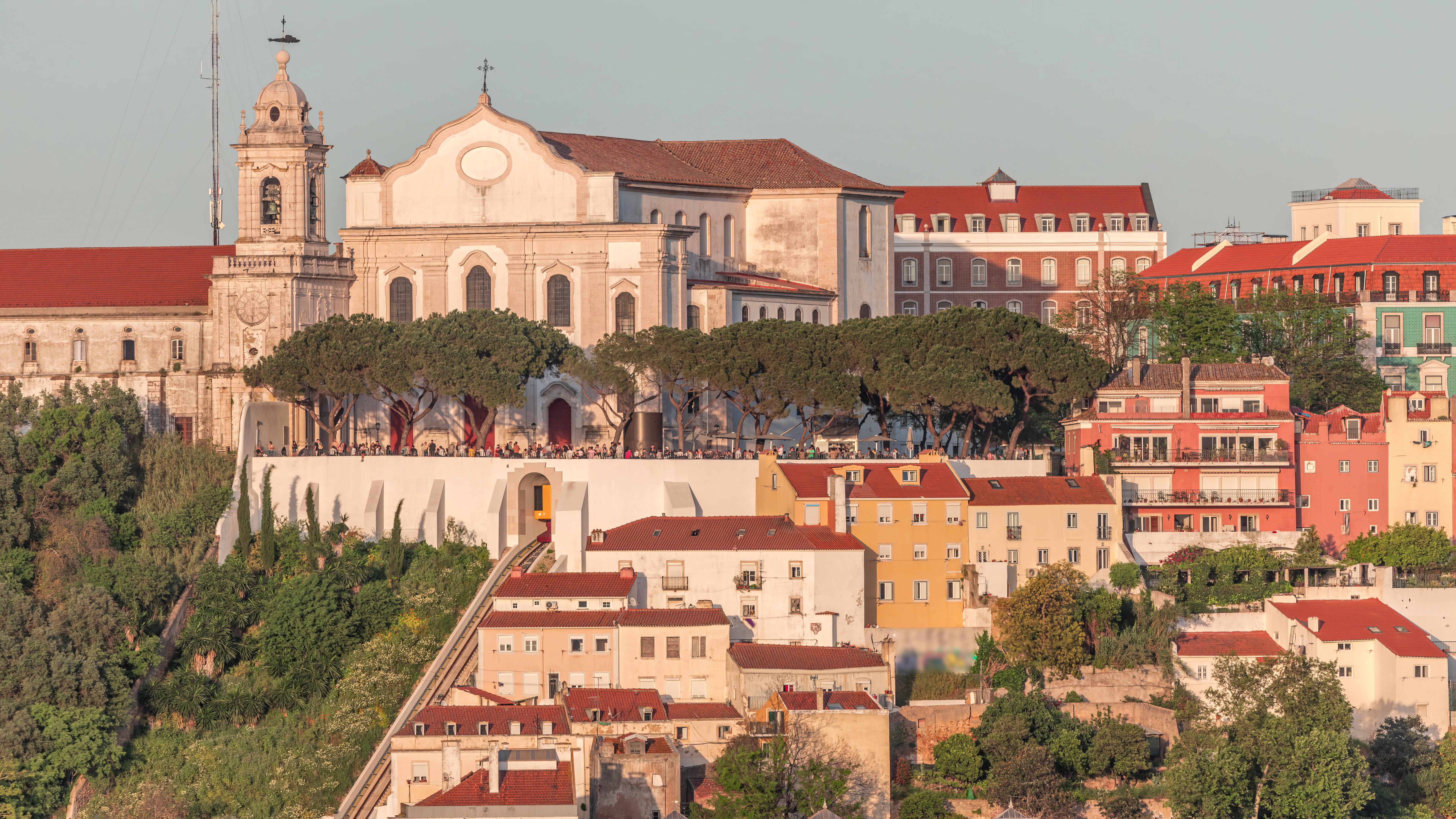
Graça
Just above Alfama is the hilltop district of Graça, known for its viewpoints and street art scene. You can reach it via tram, funicular, or by metro, climbing up from Santa Apolónia. Nearby landmarks include the Pantheon and the Igreja da Graça, one of Lisbon’s oldest convents. After taking in the sights, you can hunker down at one of the cozy neighborhood bars and restaurants.
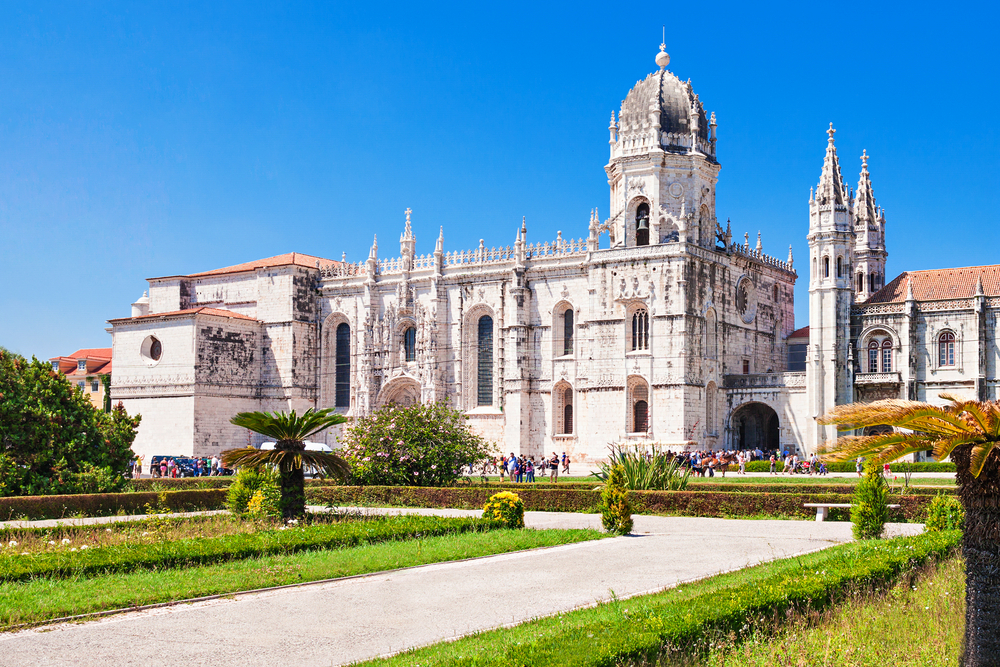
Belém
Riverside Belém is home to UNESCO-heritage sites like Mosteiro dos Jerónimos and Torre de Belém. It’s also where you can sample Lisbon’s original custard tarts. Contemporary art museums like MAAT are also a great addition to an itinerary around these parts, as is LX Factory, a creative hub home to artist studios, concept shops, and stylish restaurants, sitting just below the 25 de Abril Bridge. Recommended Experience: Inside Alcântara’s Art Scene.
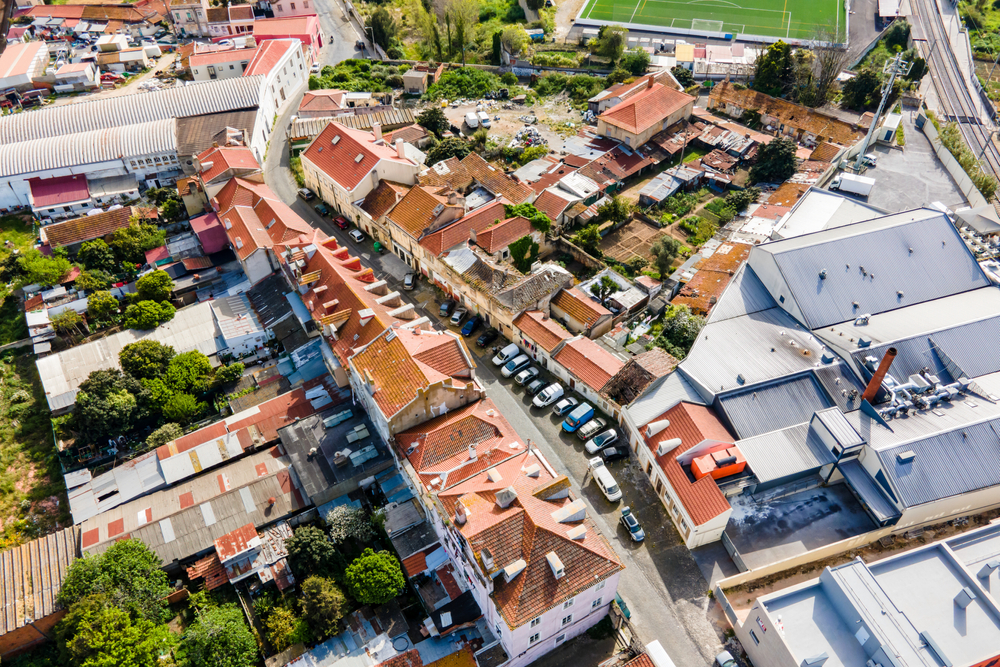
Marvila
Just east of the city is Marvila, Lisbon’s rising creative quarter. Here, old warehouses have been converted into galleries, craft breweries, and co-working spaces. The neighborhood has also become a canvas for bold street art murals and innovative projects like 8 Marvila, a center for art, culture, and food. This is where you can see creative juices flowing, visit artist studios, and witness the city evolving before your eyes. Recommended Experience: Lisbon's East Side Stories.
FREQUENTLY ASKED QUESTIONS
This FAQ gives clear, field-tested answers: which neighborhood to base yourself in Lisbon; the best time to visit to escape the crowds; the smoothest way to arrive in the city and how to move around; when to reserve restaurants and day trip suggestions if you decide to travel further.
Where should I base myself in Lisbon? Lisbon is a city best experienced on foot, so the closer you are to the action, the better. Stay within Baixa or Chiado to be near the top attractions and the riverfront, where you can watch daily life unfold around you. Join locals chatting in the kiosks along Avenida da Liberdade, lined with boutique and high-end business hotels, and enjoy easy access to the metro and train stations from here. Hilltop Alfama has more of a historic charm, though you may bump into some crowds on your way out of the hotel. This is where you’ll find Lisbon’s iconic viewpoints, fado houses, and historic landmarks like the castle and the cathedral. Príncipe Real and Estrela are best for repeat visitors looking to experience a slice of local life, hopping between gardens, markets, and art galleries. Areas like the airport or Parque das Nações on the east side are less ideal: they’re far from the center and lack the authentic charm that makes Lisbon so special (think tiled facades, cobblestone streets, and picturesque viewpoints).
How do I move around effortlessly? Despite the hills, walking is the best way to explore Lisbon. Bring sturdy shoes and watch out for the slippery cobblestones on rainy days. One way to save your legs is to hop on the tram, an electric tuk-tuk, or take an Uber. The city’s metro network links downtown to the airport and sites further north, like the Calouste Gulbenkian Foundation. Trains whisk you up from Cais do Sodré to the Cascais coastline and from Rossio to the hilltop town of Sintra, famous for its majestic palaces.
What’s the smoothest private arrival? Book a transfer with your hotel or use ridesharing apps like Uber and Bolt to get from the airport into town in about half an hour, especially if you’re carrying heavy luggage.
How far ahead do I need to book restaurants? For Michelin-starred restaurants, book at least one to two months in advance, especially if you’re visiting in summer. In busy areas like Chiado and Príncipe Real, you may need to book a table at least one week in advance. Some traditional tascas accept reservations, while others work on walk-ins only.
What is the best way to see fado? Fado in Lisbon is best experienced in small taverns and dedicated casas de fado where a singer’s voice fills the room with raw emotion. Skip the flashy tourist shows and instead look for traditional venues in Alfama, where locals still gather for late-night performances over simple food and wine.
What foods should you absolutely try in Lisbon? Sample a pastel de nata (custard tart) straight from the oven at one of the city’s bakeries like Pastéis de Belém or Manteigaria. Try bacalhau (salted cod) in a variety of forms, from codfish cakes like pastéis de bacalhau to main dishes such as bacalhau à brás, combining shredded cod with scrambled eggs and matchstick potatoes. In summer, don’t miss the grilled sardines, a favorite snack during the city’s Santo António festivities. If you want to try a mix of dishes, order a round of petiscos, Portugal’s answer to tapas. And if you want something slightly lighter, try traditional sandwiches like bifana (pork) and prego (beef).
Where can you find the best views of Lisbon? Climb up to the city’s highest districts like Alfama and Graça for a panoramic view of Lisbon from one of the neighborhood miradouros (viewpoints). Alternatively, pick a rooftop and toast the sunset with a cocktail in hand.
What’s the story behind Lisbon’s iconic yellow trams? Trams (or elétricos) have long been part of Lisbon’s urban fabric. The first tram service was introduced in the 1870s as horsecars, and only in 1901 did the city gain its first electric tram. Some tram lines have since been reduced, but many routes survived, especially those going through historic neighborhoods like Alfama, Estrela, and Graça.
When should I visit to avoid the crowds? Visit during the shoulder season between April and May and September to October to escape the crowds. The weather is still relatively warm around this time, and there are fewer queues for monuments. High summer brings the cruises, but also one of the city’s top celebrations, the Santos festivities, which brings much merrymaking to the districts of Alfama and Graça across the month of June. Winter is much quieter, with the occasional rainy day inviting you to explore the city’s numerous art museums and historic shops.
I want to explore beyond the city. What are the best day trips from Lisbon? From scenic hikes across Sesimbra and the Arrábida Natural Park to UNESCO-listed sites in Évora, Batalha, and Tomar, and forgotten schist villages in inland Portugal, there are many special day trips from Lisbon. Some towns like Cascais and Sintra are easy to reach by train, while others are best explored by car or on a private tour, especially if you want to fit in several places in a short period.
If you had to pick one coastal town to visit from Lisbon, which would it be? We’d choose Ericeira over Cascais. Cascais is closer and has that resort-town feel, but Ericeira has more of a traditional fishing village vibe with its whitewashed houses framed in blue, not to mention world-class surf and top-notch seafood restaurants.
How do I get from Lisbon to Porto? A train takes you along the coast from Lisbon to Porto in about three hours, departing from the Santa Apolónia station. Unless you’re renting a car throughout your trip, this is the best way to reach Portugal’s second city.
DISCOVER MORE OF PORTUGAL
Explore Portugal, region by region – curated private day tours and insider-led experiences in Lisbon, Porto, and the Douro, the Alentejo, the Algarve, and Madeira.
New Experiences Every Month!
We travel the world in search of transformative experiences outside the beaten paths. Subscribe to our newsletter to be among the first to know about new, exciting experiences around the globe.
FROM THE JOURNAL
Get ready for your next trip with long-form features from our travel and culture journal, Wayer.
FERNWAYER
We are reimagining luxury in travel as authentic connection, immersive storytelling, rare access, and a spirit of curiosity through curated, exclusive, and hard-to-arrange experiences.

Quick links:
